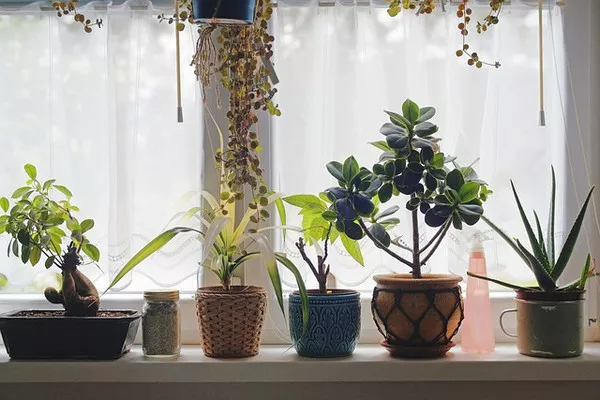Plants are the cornerstone of life on Earth. They play a vital role in maintaining ecological balance, providing oxygen, and serving as a primary source of sustenance for countless species, including humans. One of the most fascinating aspects of the plant kingdom is their ability to reproduce. Unlike animals, plants don’t engage in courtship rituals or mate selection. Instead, they employ a variety of intricate mechanisms to ensure their survival and propagation. In this article, we will delve into the remarkable world of plant reproduction, shedding light on both the well-known and lesser-known methods employed by these green organisms.
Plant reproduction can be classified into two main categories: sexual and asexual. Each method serves specific purposes and offers distinct advantages for plants.
Sexual Reproduction
Sexual reproduction in plants involves the fusion of male and female reproductive cells, or gametes, resulting in the formation of a new individual. This process introduces genetic diversity, allowing for adaptation to changing environmental conditions.
a. Pollination: Most flowering plants, or angiosperms, rely on pollination for sexual reproduction. Pollination occurs when pollen, produced by the male parts of a flower (stamen), is transferred to the female parts (pistil) of the same or a different flower. This transfer can be facilitated by wind, insects, birds, or other animals. Once pollen reaches the pistil, it travels down to the ovule, where fertilization takes place.
b. Fertilization: Fertilization is the union of the sperm cell within the pollen with the egg cell within the ovule. This results in the formation of a zygote, which will develop into a new plant. The fertilized ovule matures into a seed, encapsulating the genetic information necessary for the development of a new plant.
Asexual Reproduction
Asexual reproduction involves the creation of new plants without the involvement of gametes. While this method does not contribute to genetic diversity, it offers numerous advantages, such as producing offspring faster and ensuring the retention of desirable traits.
a. Vegetative Propagation: Many plants can reproduce asexually through various vegetative structures, such as runners, rhizomes, bulbs, and tubers. For instance, strawberries produce runners that develop into genetically identical plants, while potatoes generate new individuals from the eyes on their tubers.
b. Cloning: Horticulturists and botanists often use cloning techniques to propagate specific plant varieties or cultivars with desirable characteristics. This method involves taking cuttings from a parent plant and encouraging them to root and grow into genetically identical offspring.
c. Apomixis: Some plants, particularly certain species of grasses and dandelions, reproduce asexually through a process called apomixis. In apomixis, seeds are produced without fertilization, resulting in offspring that are genetically identical to the parent plant.
Plant Reproduction Strategies
Plants have evolved a remarkable array of strategies to ensure their reproductive success. These strategies are often influenced by environmental conditions, pollinator availability, and specific adaptations to their habitats.
1. Wind-Pollinated Plants
Plants that rely on wind pollination, such as grasses, release lightweight, abundant pollen into the air. These plants often have inconspicuous flowers, as they do not require showy petals to attract pollinators. Instead, their reproductive success depends on the efficiency of wind transport.
2. Insect-Pollinated Plants
Many plants have co-evolved with insects to facilitate pollination. They have evolved colorful, fragrant flowers to attract insects like bees, butterflies, and beetles. These insects inadvertently transfer pollen from one flower to another as they seek nectar or pollen for their own nourishment.
3. Bird-Pollinated Plants
Bird-pollinated plants, such as hummingbird-pollinated flowers, tend to be brightly colored and have long, tubular shapes to accommodate the birds’ specialized feeding habits. The vibrant colors and nectar-rich rewards entice these avian pollinators to visit the flowers and carry pollen between them.
4. Bat-Pollinated Plants
Bats are another group of animals that play a vital role in plant pollination, particularly in tropical regions. Some plants have evolved white or pale-colored, night-blooming flowers with strong, fruity scents to attract bats, which inadvertently transfer pollen as they feed on nectar.
5. Self-Pollination and Cross-Pollination
Plants can exhibit both self-pollination and cross-pollination mechanisms. Self-pollination occurs when a flower’s own pollen fertilizes its own eggs, leading to genetically identical offspring. Cross-pollination, on the other hand, involves the transfer of pollen from one flower to another, promoting genetic diversity. Some plants are capable of both methods, depending on environmental conditions and pollinator availability.
Environmental Factors
Environmental factors play a crucial role in plant reproduction, influencing the timing, success, and efficiency of the process. Key environmental factors include:
Temperature: Temperature affects the timing of flowering and seed development. Some plants require specific temperature cues to initiate flowering, while others may be sensitive to frost damage during flowering.
Photoperiod: The length of daylight hours can trigger flowering in many plant species. Short-day plants, long-day plants, and day-neutral plants all respond differently to changes in photoperiod.
Water Availability: Adequate water supply is essential for reproductive success, as drought stress can lead to reduced flower production and seed set.
Nutrient Availability: Plants require essential nutrients, such as nitrogen, phosphorus, and potassium, to support flower and seed development. Nutrient deficiencies can impair reproductive processes.
Conclusion
Plant reproduction is a complex and diverse process, encompassing an array of mechanisms that allow these organisms to adapt and thrive in their respective environments. Whether through sexual reproduction, asexual propagation, or a combination of both, plants have evolved to ensure the continuation of their species. Their interactions with pollinators and the influence of environmental factors further highlight the intricate nature of plant reproduction. By better understanding these processes, we can appreciate the essential role plants play in sustaining life on Earth and the delicate balance that exists within the natural world.


